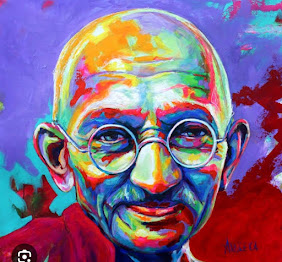The history of music instruments உலக வரலாற்றின் இசை மற்றும் இசைக் கருவிகளின் பற்றிய தொகுப்பு
The history of music instruments🎻🎧
The history of musical instruments is as old as human civilization itself, reflecting the creativity, culture, and technological advancements of societies across time. Here’s an overview of their evolution:
Prehistoric Era
Origins
Musical instruments likely originated from natural sounds and rhythms, such as the clapping of hands, stomping of feet, or the use of simple objects like sticks or stones.
Earliest Instruments
Flutes
Made from bird bones or mammoth tusks, dating back over 40,000 years (e.g., the Divje Babe Flute from Slovenia).
Percussion
Early drums and rattles made from animal skins or hollowed-out objects.
Ancient Civilizations
1. Mesopotamia
Lyres and harps were prominent, as evidenced by artifacts like the "Lyres of Ur."
2. Egypt:
- Instruments included flutes, lyres, harps, and percussion. Sistrums, a type of rattle, were used in religious ceremonies.
3. India :
- Ancient texts like the **Natya Shastra** describe instruments such as the veena (stringed) and mridangam (percussion).
4. China :
- Instruments like the guqin (zither) and xun (ceramic flute) were central to court and spiritual music.
5. Greece and Rome:
- Instruments such as the aulos (double-reed pipe) and kithara (lyre) played key roles in theater and rituals.
Medieval Period (5th–15th Century)
Europe:
The church dominated music. Instruments like the organ, lute, and psaltery gained prominence.
Islamic Influence:
Instruments like the oud (precursor to the lute) and rebab (early violin) spread across Europe and Asia through trade and conquest.
Renaissance (15th–17th Century)
Innovation flourished, with instruments becoming more complex and specialized.
Keyboard Instruments :
The harpsichord and clavichord emerged as precursors to the modern piano.
Strings:
Violins, violas, and cellos developed in Italy, with the Amati and Stradivari families leading craftsmanship.
Baroque and Classical Periods (17th–19th Century)
- Instrument design evolved for greater range, tonal quality, and volume.
- The orchestra expanded, incorporating standardized groups of strings, brass, woodwinds, and percussion.
- The piano replaced the harpsichord as the dominant keyboard instrument.
19th Century (Romantic Era)
- Industrial advancements allowed for mass production and experimentation with new materials.
- Instruments like the saxophone (invented by Adolphe Sax) and tuba were introduced.
20th Century to Present
Electronic Instruments:
The theremin, synthesizers, and electric guitars revolutionized music in the 20th century.
Digital Technology:
Sampling, MIDI, and digital audio workstations (DAWs) have transformed music creation and performance.
Cultural Significance
Throughout history, musical instruments have reflected the cultural, religious, and social contexts of their times. They have served as tools for storytelling, worship, celebration, and personal expression, evolving alongside humanity's artistic and technological progress.
"This Content Sponsored by Buymote Shopping app
BuyMote E-Shopping Application is One of the Online Shopping App
Now Available on Play Store & App Store (Buymote E-Shopping)
Click Below Link and Install Application: https://buymote.shop/links/0f5993744a9213079a6b53e8
Sponsor Content:
#buymote #buymoteeshopping #buymoteonline #buymoteshopping #buymoteapplication"




Comments
Post a Comment